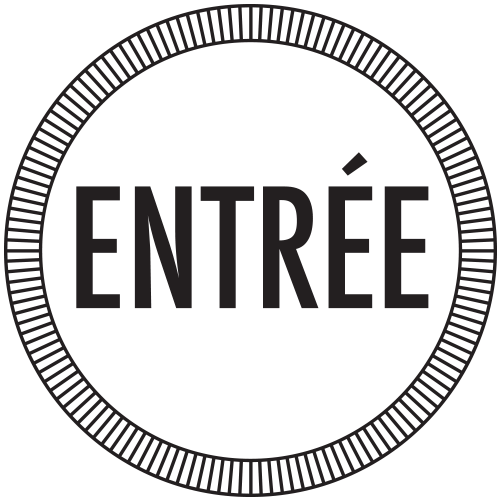Arne Rygg
Borghild Rudjord Unneland
Lisa Him-Jensen
Cato Løland
Lewis & Taggart
Klara Sofie Ludvigsen
Magnhild Øen Nordahl
Mathijs van Geest
Andrea Spreafico
Flag Bergen
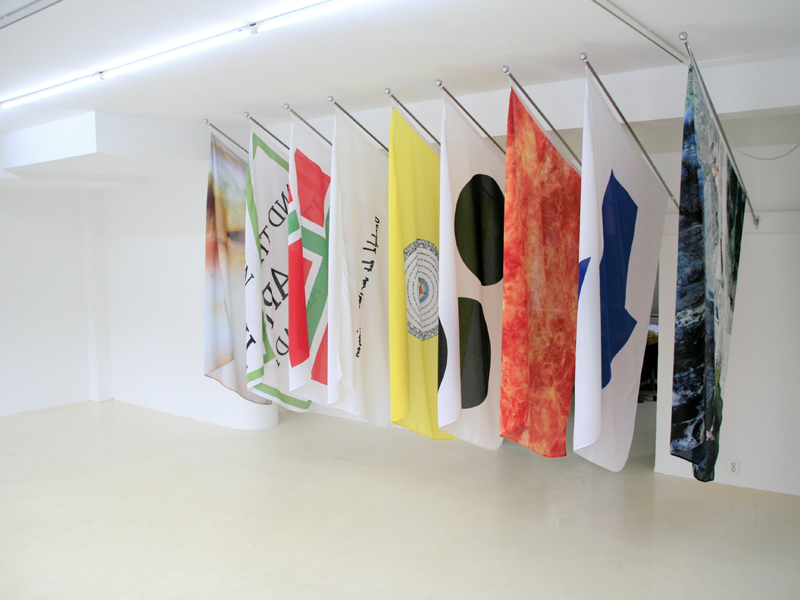
This is an ongoing outdoor flag project curated by Randi Grov Berger. The project themes issues such as citizenship and asks questions about identity and nationality. Flags are strong symbols of power that are used in both warfare and celebration, with many rituals attached to them. The symbolic value of raising a flag, or burning flags is almost universal. The use of colors and symbols in flags has a long and complex history, which has been studied in the field of vexillology. The artists involved in this project address these issues when they explore the flag as a medium, in parallel with the themes of their individual practices. Flag Bergen was the first iteration of the project.
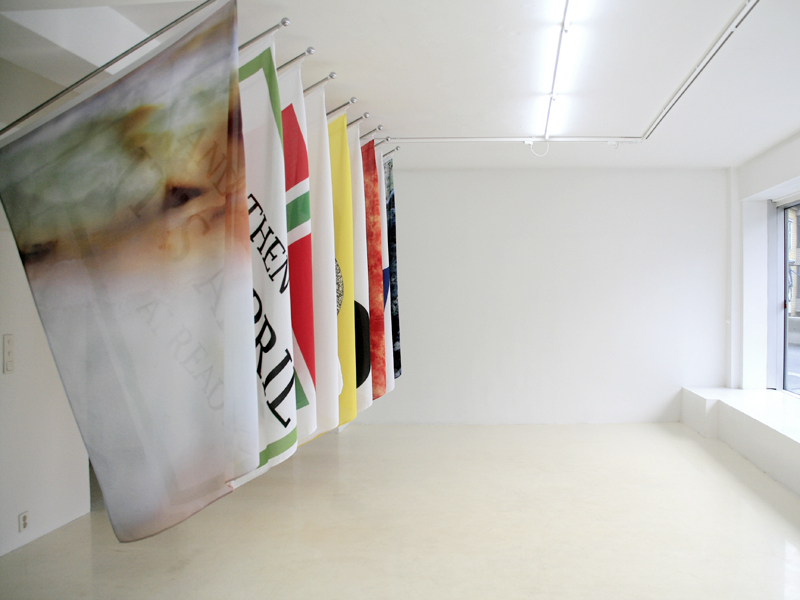
All flags united at Entrée
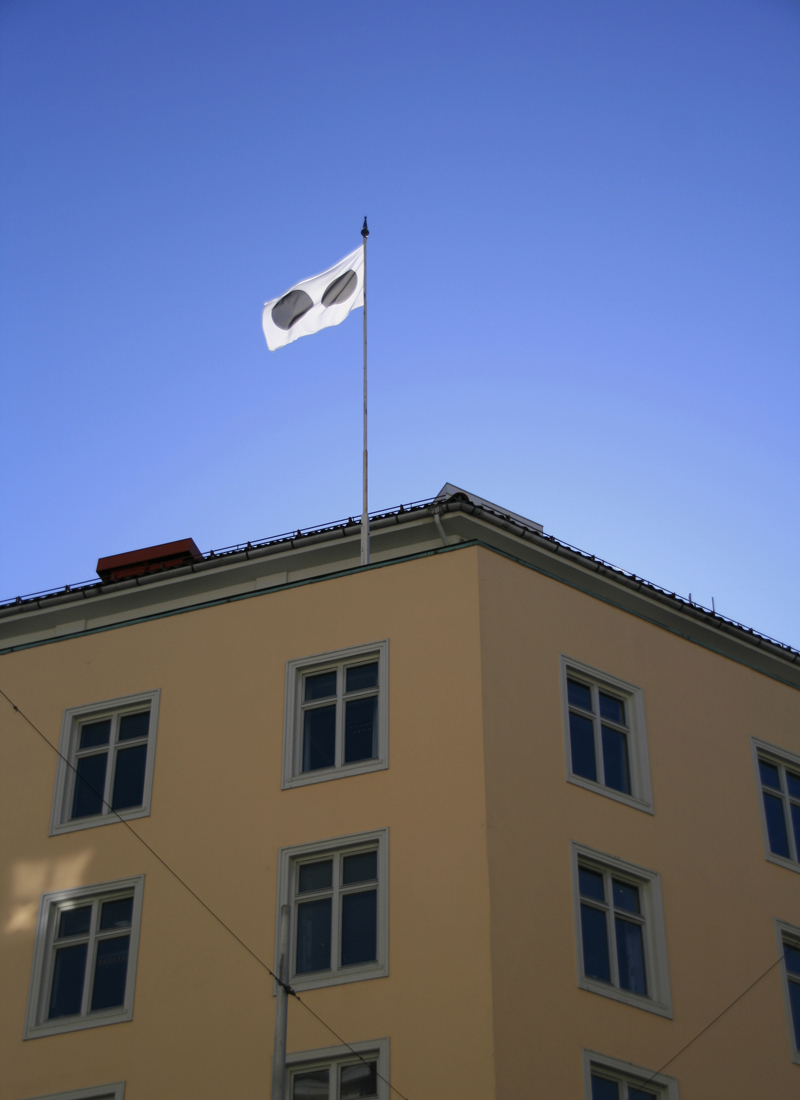
Black Holes by Lewis & Taggart
Lewis & Taggart
Black Holes
Lewis & Taggart began their Black Holes project in 2008 with a twin pair of circular wooden sculptures, each painted black on top. Since then, these sculptures have become a permanent fixture in their luggage, following the artists on their worldly meanderings and posing coyly in an ongoing series of photographic portraits. As physical manifestations of cosmic absence, the black holes can perhaps be seen as stand-ins for their displaced creators, as sentient objects masquerading as voids, or simply as compositional elements within the photographs. Lewis & Taggart's contribution to Flagg is an extension of the Black Holes project, as iconic representations of nothingness take up temporary residence in the skies over Bergen. The transition from the content of a photograph to the surface of a flag feels somewhat apt: After all, a flag on most occasions symbolizes place, and what better place to honour than no place at all?
Andrew Taggart and Chloe Lewis are a Canadian artist duo based in Bergen whose practice is primarily concerned with the poetic space between knowledge and matter. They have been collaborating since 2006, and in 2010 they received a joint MFA from The Bergen National Academy of the Arts. Their work has most recently been exhibited at The Kuntsi Museum of Modern Art, Finland, Rogaland Contemporary Art Centre and Tag Team Studio. In parallel to their studio practice, Lewis & Taggart operate and program The Museum of Longing and Failure, a small museum based in Bergen.
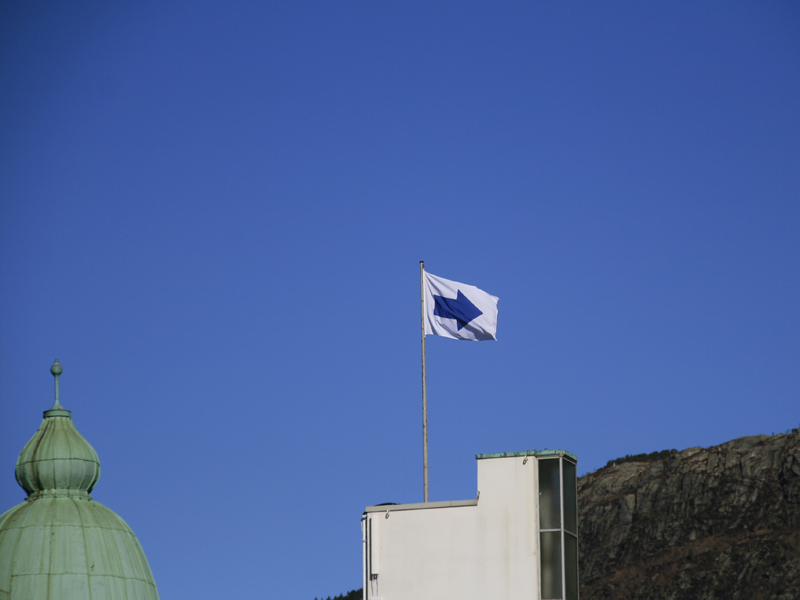
dit by Magnhild Øen Nordahl
Magnhild Øen Nordahl
dit
The flag comprise two simple elements; a white background and a blue arrow pointing away from the flagpole. The arrow will point in the direction where the wind blows, and when there is no wind it will be curled and pointing to the ground. This random and shifting direction guidance contrasts the way we normally use the arrow and the flag. The arrow is a symbol that in our daily lives should be a clear and unequivocal marker of which direction to move in. In the same way, the traditional flag has a stabile means of communication. When wind and weather conditions decide the direction in which the arrow will point, these controlled systems of communication collapse. The arrow will point you in ever changing directions.
Magnhild Øen Nordahl lives and works in Bergen. In recent years she has exhibited at NO.5 in Bergen Kunsthall, Galleri Svalbard, Tag Team Studio, Milieu in Bern and Bergen Kjøtt. She has also initiated temporary projects in public spaces and organized exhibitions as well co-founded an artist residency in Svalbard. Later this year her works will be shown among other places in Sydney.

ONYX by Cato Løland
Cato Løland
ONYX.
Imagine there is this marble that feels like fabric when touching it.
Imagine it w a v i n g in the wind.
Folded
togeth
er.
Sometimes it can make you proud.
It might happen that it tenderly caresses your face when the wind gets to it.
It can be burned.
Cato Løland lives and work in Bergen. In 2009 he finished his Master at Bergen National Academy of the Arts, during which he also had an exchange period at Helsinki Art Academy. Løland was the co-founder of Entrée in 2009, but has since last summer focused strictly on his own artistic projects. Recently he had his first solo show at Tag Team Studio. In his work Løland has long been investigating the potential in different material, both used and found, working often with subtraction and draining objects for colours.

Flagg for Homo verecundus by Borghild Rudjord Unneland
Borghild Rudjord Unneland
Flagg for Homo verecundus
Å flagge
Å flagge ut
Å overgi seg
Å gi seg
Å gi seg med flagget til topps.
Å flagge sine nederlag.
Borghild Rudjord Unneland lives and works in Bergen and finished her Diploma at Bergen National Academy of the Arts in 2003. Unneland works primarily with installations, using everyday objects as the most important tool. Through her work she reveals conditions and moods that are difficult to verbalize. Contrasts are often the basis in her work. The works are beautiful and disgusting, funny and serious. Through small and simple means she makes familiar situations weird and wonderful.

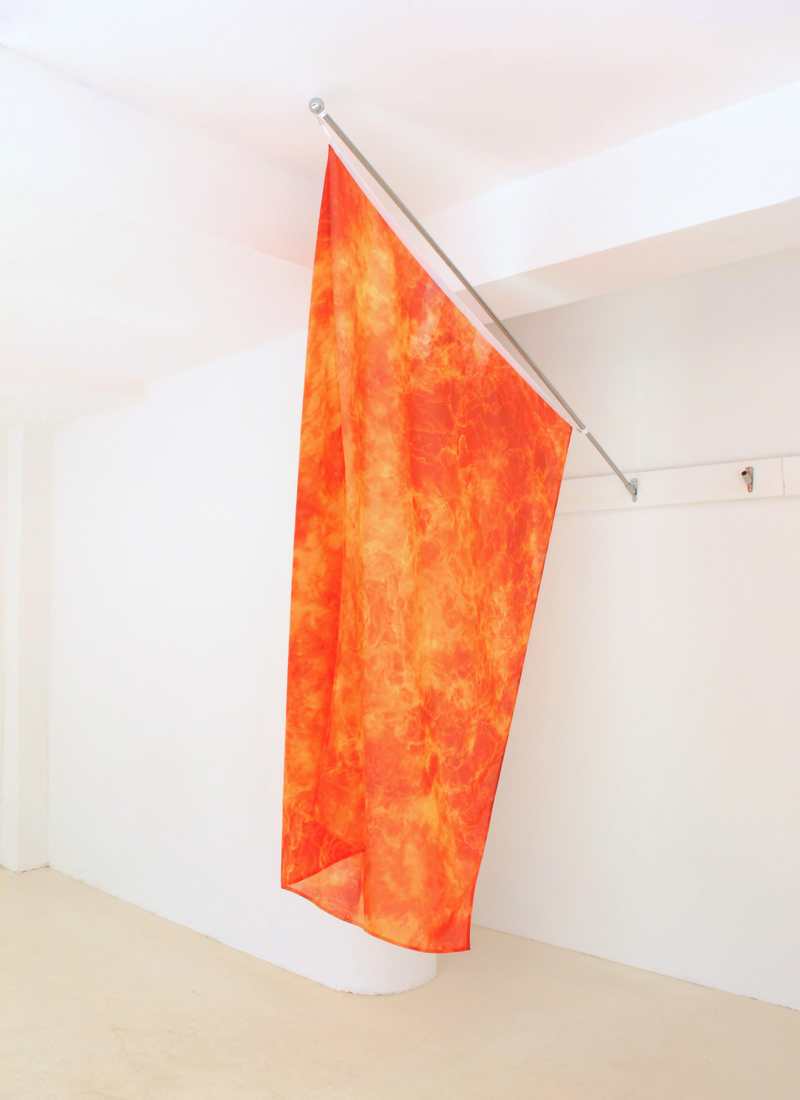
Ja, vi elsker by Arne Rygg
Arne Rygg
Ja, vi elsker
På 17. mai foretrakk han fjelltur. Alle flaggene i byen den dagen gjorde ham urolig. Flagrende bannere og tøystykker var greit nok. Men ikke nasjonalflagg. En ting var den historiske forbindelsen mellom flagg og krig, den måten flagg hadde blitt brukt for å ildne til kamp. En annen ting den måten nasjonalflagg var blitt brukt for å binde folk sammen, gjennom å dekke over indre ulikheter og framstille forskjeller til andre. Men det verste, slik han så det, var at det var så lett overse ironien ved det å vifte med flagg.
Han hadde ikke de samme problemene med andre former for symbolbruk. Når folk, politikere og ledere holdt sine taler, var metaforene i språket så framtredende at det ikke var vanskelig å innta en kritisk distanse til det de ville overbevise om. Men han visste ikke hvordan han skulle argumentere mot flagg. De ble oppfattet nesten som om de skulle være noe hellig, noe som hadde et én-til-én-forhold til det som de symboliserte. Å sette fyr på flagg ble oppfattet som et grovt overtramp. Det var nesten som om folk hadde et mystisk forståelse av hva flagg var for noe; nesten som om de fortsatt fryktet for voodoo.
De kjempet både hun og han, nå lyser seirens baunebrann utover Norges land
Mot himlen stiger flagg ved flagg som tusen gledesbål idag for alle vunne slag
Det knitrer som før over hytte og slott, et flammende merke i rødt og hvitt og blått
(Finn Bø, Bias Bernhoft og Arild Feldborg. Fra tredje vers av Norge i rødt hvitt og blått)
Arne Rygg lives and works in Bergen. Rygg finished his Diploma at Bergen National Academy of the Arts in 2003. A starting point for Rygg`s work is the potential of change when interpreting and reinterpreting our world. He is concerned with how meaning is created, changed and dissolved. Rygg`s work often takes place in the public realm and he is also a co-editor for KUNSTJOURNALEN B-POST since 2006.
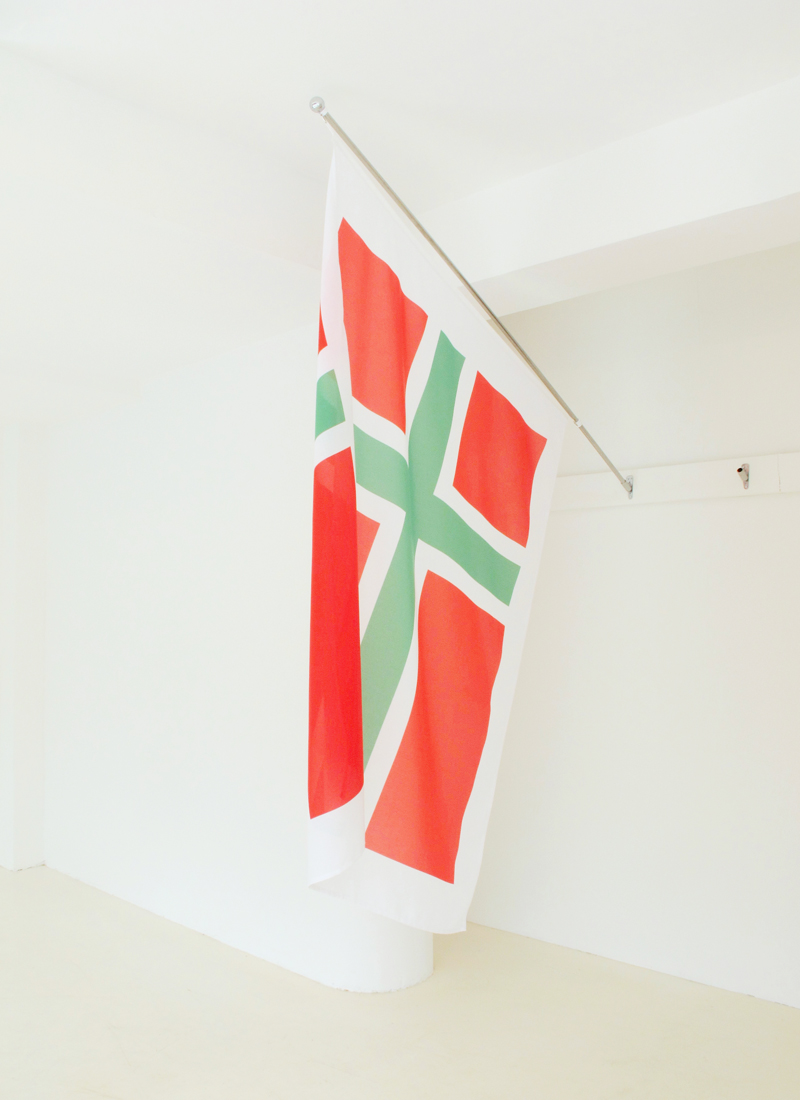
noritalian by Andrea Spreafico
Andrea Spreafico
noritalian
nor
conjunction /no:r/
Definition:
used before the second or last of a set of negative possibilities, usually after 'neither'
We can neither change nor improve it.
Strangely, neither Carlo nor Juan saw what had happened.
mainly UK neither
"I've never been to Iceland." "Nor have I."
I can't be at the meeting and nor can Andrew.
italian
noun /i´tæl.j?n/, /-i.?n
Definition:
a person from Italy
We met three Italians.
a language of Italy
I'm learning Italian.
adjective /i`tæl.j?n/, /-i.?n/
Definition:
from, belonging to or relating to Italy
italian food/art/wine
north
noun (also North)/no:?/
Definition:
the direction which goes towards the part of the Earth above the equator, opposite to the south, or the part of an area or country which is in this direction
The points of the compass are North, South, East and West.
The countryside is more mountainous in the north (of the country).
Cambridge is/lies to the north of London.
a north-facing window
Etymology:
Old English norð, is akin to Old Frisian and Old Saxon north, Old High German nord, Middle High German nort, German Nord (but Old French north, whence French nord, comes from Old English) and Norden, Medieval Dutch nort, later noort, Dutch noord, and Old Norse northr.
Further off, Oscan nertrak, on the left, Umbrian nertru, from the left, and
Greek nerteros, nether: basic idea of north is ‘left (with eastern orientation)’.
The Indo-European root is perhaps *ner-, under.
Andrea Spreafico lives and works in Bergen. Spreafico is born in Ravenna, Italy; he has Milanese parents and Campiana, Piedmontese, Lombard and Dalmatian grandparents. Educated as philosopher in Bologna, Italy and Reims, France, he studied Art in Public Space in Nuremberg, Germany, where he lived seven years and had a child who owns a French passport.
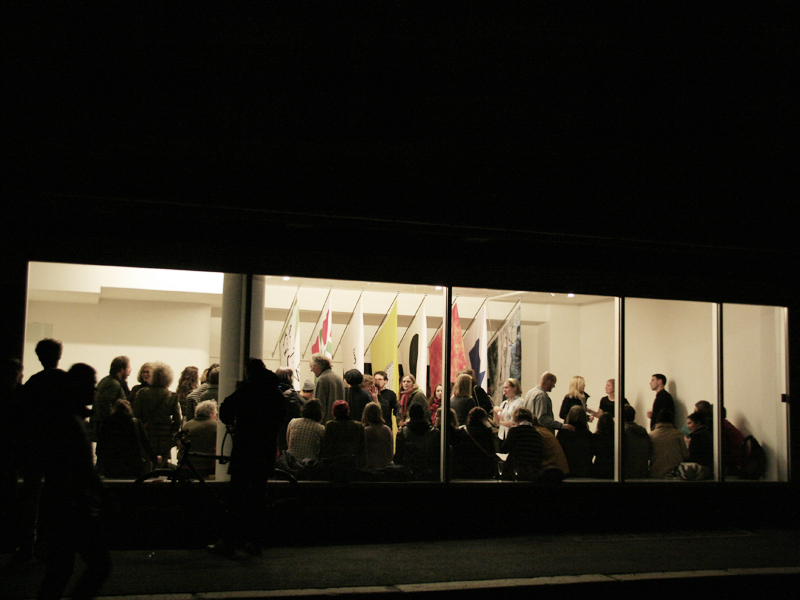
Vernissage
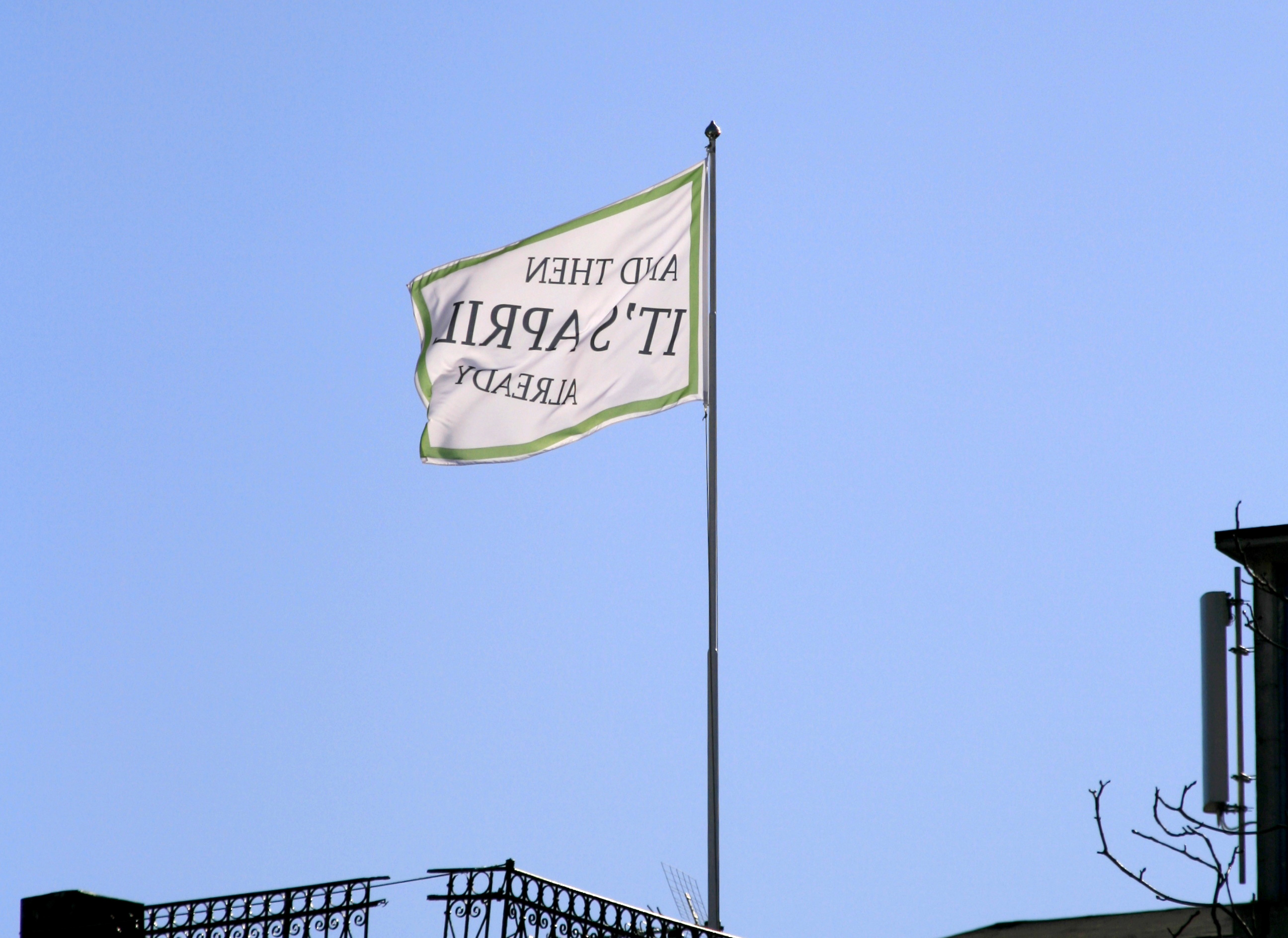
And then is`s April already by Matijs van Geest
Mathijs van Geest
And then it’s April already
When time at work can seem very slow it is usually because there is a lot of things you want to do after. You want to go out, meet with friends, play sports or see your parents. Yesterday on the contrary, I heard a girl at my job say that time at work goes really fast. Obviously this made me wonder what her time after work means to her. I couldn’t help to imagine her alone on her grey couch waiting for time to pass, watching some boring television show, counting down the minutes to go to work again.
While talking to a friend, a woman in the train reacted very surprised when she realised that within not too much of time it would be April already. I missed the rest of the conversation, which made me wonder if her reaction was either positive or negative. It could be that she had a lot of work to do before her deadline in April came in sight. In this case she has to work hard and there would be no time to loose. The other possibility could be that she is going on vacation in April and that this thought made her comfortable about the few weeks of things that have to be done before.
The infrastructure of time is a funny one; it is created for with the intension of precision but we don’t really know how to deal with it. The flag with the text ‘And then it’s April already’ can be read both literary and abstract.
Also:
I write this text on February 29th, the scar on the body of time. I’d rather saw that we celebrated this day, instead of pretending that nothing is different. But then, maybe it is better this way.
Today on television I heard them speak about another delay in time. On occasions the earth turns more slowly than usual. A certain de-consistency takes place because of earthquakes, volcano’s and tsunami’s. Again a quality that confuses many scientists for it interrupts the precision of our creation time.
Mathijs van Geest resently finished his Master at Bergen National Academy of the Arts (2011). Geest is an artist in a continuous search for the ideal combination between the joy of recognition and the happiness of discovery. His studio practice is interdisciplinary, lead by intuitions and experiences. It is an interest of his to develop works that are able to address a constellation of moments that occur in the process of materializing an artwork. These moments are what fascinate him; at times they are smooth transitions between form and idea and at other times completely abrasive.
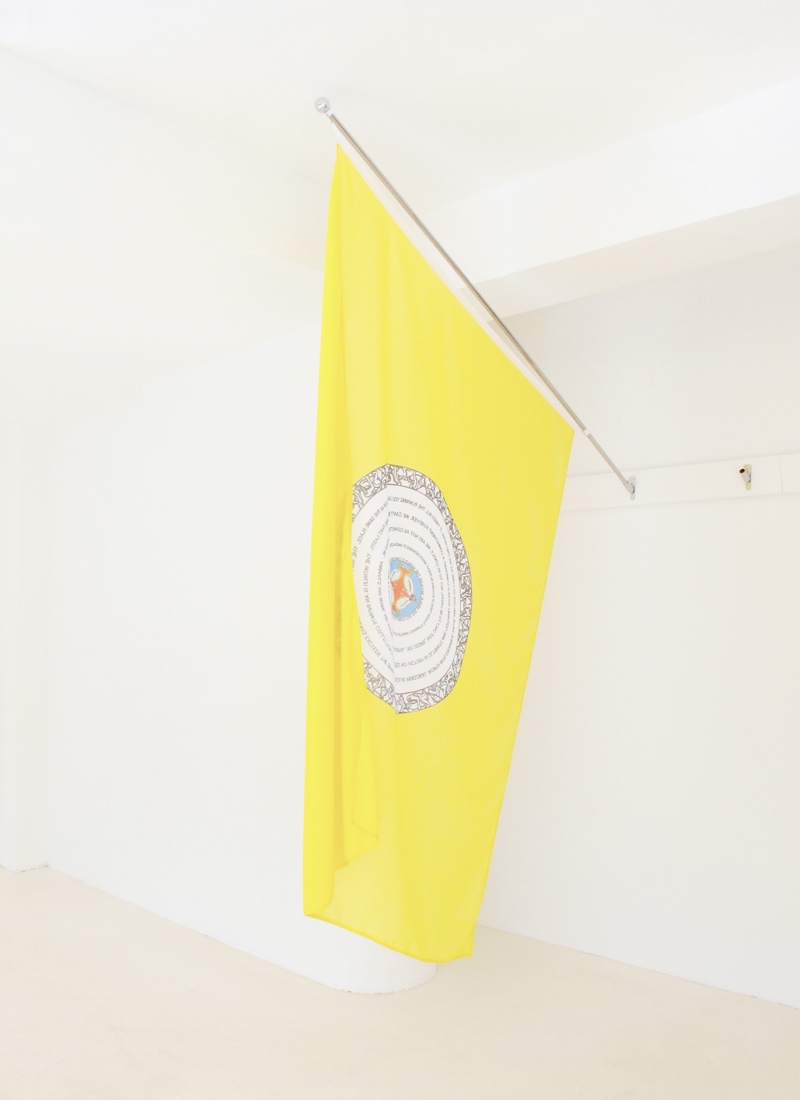
The supply of people always exceeds the demand by Lisa Him-Jensen
Lisa Him-Jensen
The supply of people always exceeds the demand
The flag I've come up with is a crossbreed of the various inputs that affect my work right now. They are found in ethics, economics, at the zoo and in the ordinary lowly stuff.
The flag's appearance is to some extent influenced by looking at countries' coats of arms, several of which are quite peculiar with plenty of interesting and silly detail. They also sport a multitude of animals, which are there to serve as representatives of nations, as symbols of ideals, and the like. They range from the standard lion and eagle to the less frequent zebra or Emu.
The beasts of my flag (the mallard and the bonobo) have been chosen because of specific traits, which could be seen to correspond to specific traits in man. I have an interest, somewhat personal, in man as a distanced and very conflicted animal. This conflict persists when in the herd, as well as when attempting to become the self-sufficient individual he fails to be. He doesn't seem to be particularly competent at being a genuine animal either. If the flag represents anything, it would be this state of affairs. It's a state that could use a flag.
The supply of people always exceeds the demand. Let's resolve personal worth into exchange value and live as long as we find work. It takes all the running you can do to keep in the same place. The world is an infinite collection of possibilities: no victory is ultimate and nothing should command a commitment forever. We can't bear anything that lasts. Animals are born, are sentient and are mortal. We desire, not only to be loved, but to be lovely. We are not as competent as we should be. There is a helplessness in the character of extreme humanity though there is nothing in itself which renders it ungraceful or disagreeable. We only regret that it is unfit for the world, because the world is unworthy of it.
Lisa Him-Jensen lives and works in Bergen. She graduated from Bergen National Academy of the Arts in 2009 and is now a member of Bergen Atelier Gruppe/ studio collective. Him-Jensen is currently the resident artist of Bergen Municipality`s Berlin program. In April this year she's taking part in a group exhibition at Kurant visningsrom, Tromsø and in October she has a solo show at Nord-Trøndelag Fylkesgalleri.
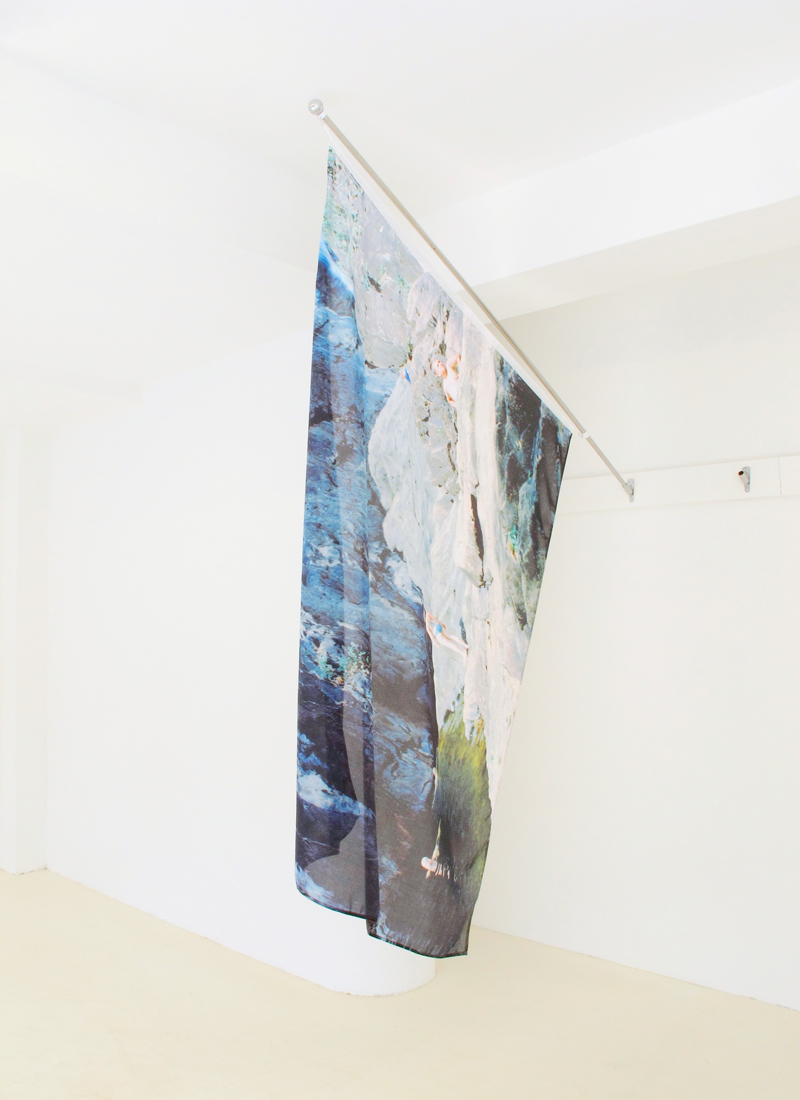
Pågåande hending by Klara Sofie Ludvigsen
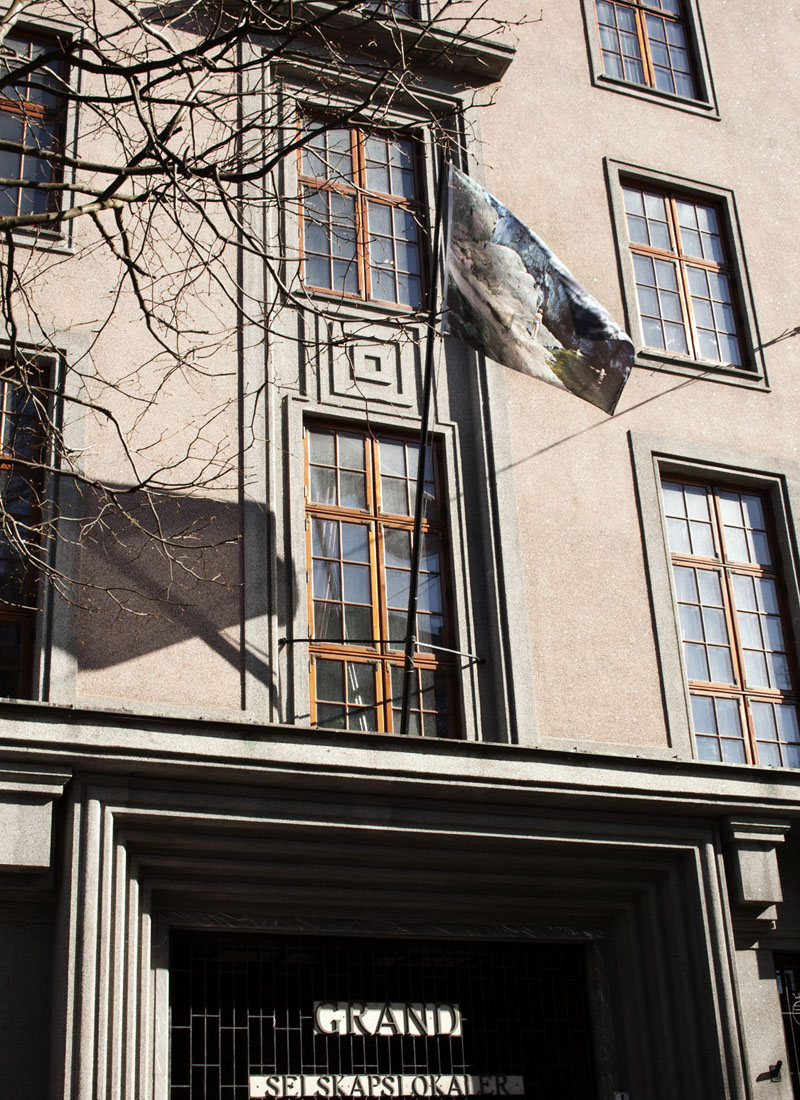
Klara Sofie Ludvigsen
Pågåande hending
Eg vil flagge eit fotografi som seier noko om oss. Om samfunnet. Om eksistensen. Om einsemda me er dømt til. Om avmakta. Om alt som er på liksom. Om leikeverda. Med fuglar og ereksjon og tilbeding. Om det absurde og opplagte. Om det mørke og det uskuldige. Om alt me ikkje veit og alt me latar som me kan. Om livet. Om pusten. Om alfabetet. Om lovane me lagar. Og vegane me bygger. Om veggane me reiser. Om elefantane me sit på. Om skorne me pussar og hår som me klypper. Om å klappe. Om å gløyme. For å sjå. Hunden som klør. Om galskapen. Om villmarka. Om dei oppblåste ballongane. Om nålene som ligg klin i. Om meg.
Klara Sofie Ludvigsen lives and works in Bergen. Ludvigsen has her education from University College of Creative Arts, England, where she studied Photography and Media Arts. Ludvigsen is showing regularly at Teatergarasjen`s Prøverommet since 2009, and is part of many collaborative projects like 1+1= 11 together with Marit Loe Bjørnstad, Hanne Hvattum and Eva Pfitzenmaier.
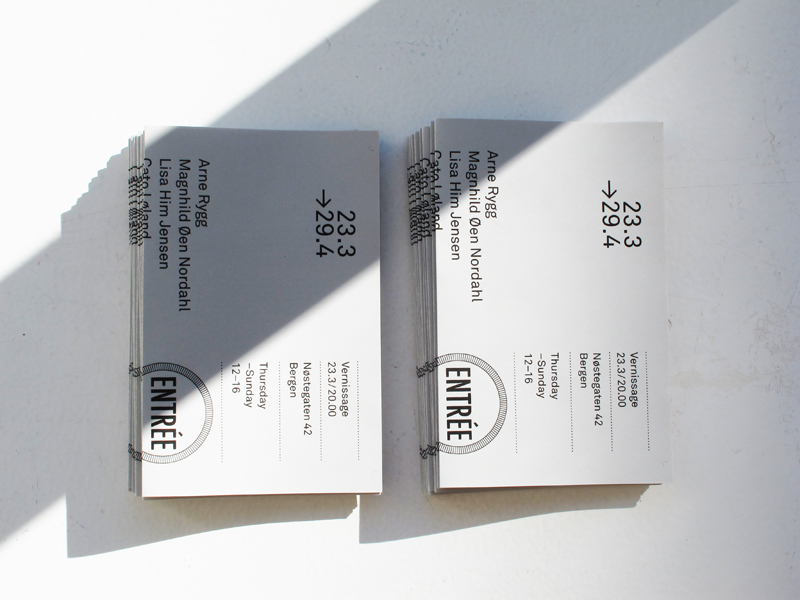
Maps to search for the flags throughout the city of Bergen
